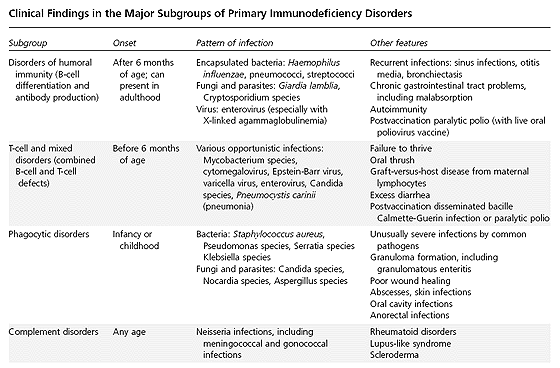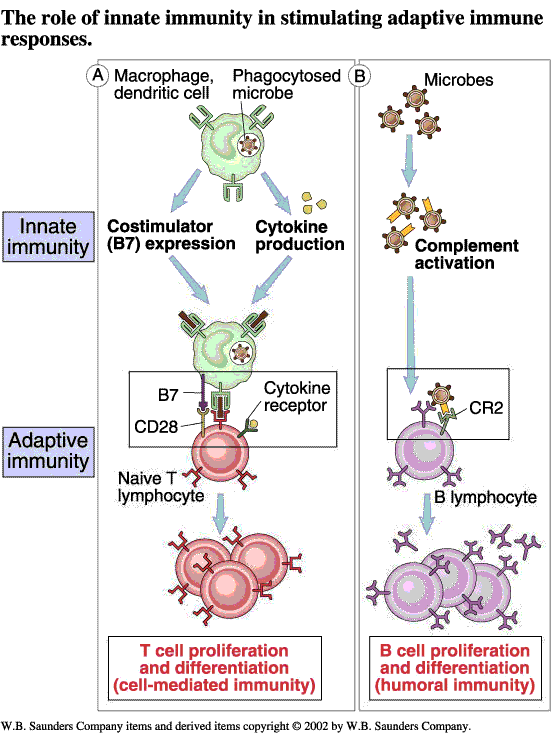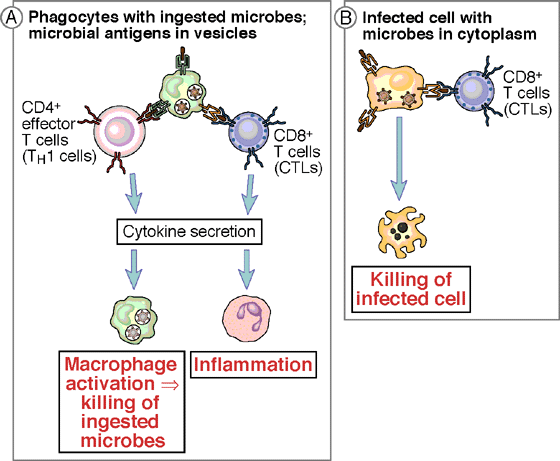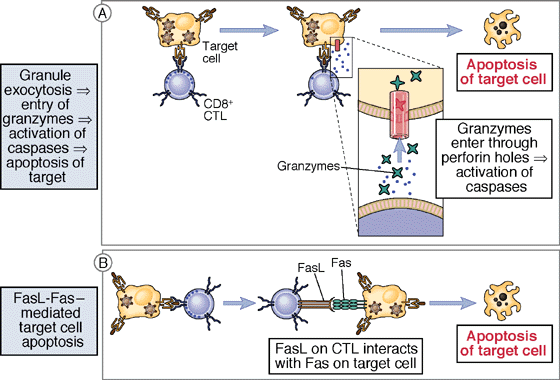Infections in Immunocompromised Patients
© Michal Holub3rd Department of Infectious and Tropical Diseases, 1st FM CU and UH Bulovka
Introduction
Principles of infections of immunocompromised patients
- Immucompromised patient has alterations of innate defense mechanisms leading to an increased risk of severe infections
- Infections are usually caused by pathogens with a low virulence
- Course of infections due to virulent microorganisms is severe
- Absence or alteration of immune response modifies clinical picture
- Rapid diagnostics is important because infections are frequently fatal
Overview of selected immunodeficiencies
- Deficiencies of innate immunity
- Neutropenia
- Defects of phagocytosis
- Complement deficiencies
- Deficiencies of adaptive immunity
- T-cell deficiencies
- Hypogammaglobulinemia (B-cell deficiencies or defects of antibody production)
Approach to a Patient with Immunodeficiency
Warning Signs of Primary Immunodeficiency Disorders
- Medical history
- Eight or more ear infections in one year
- Two or more serious sinus infections in one year
- Two or more bouts of pneumonia in one year
- Two or more deep-seated infections, or infections in unusual areas
- Recurrent deep skin or organ abscesses
- Need for intravenous antibiotic therapy to clear infection
- Infections with unusual or opportunistic organisms
- Family history of primary immunodeficiency
- Physical signs
- Poor growth, failure to thrive
- Absent lymph nodes or tonsils
- Skin lesions: teleangiectasias, petechiae, dermatomyositis, lupus-like rash
- Ataxia (with ataxia-teleangiectasia)
- Oral thrush after one year of age
- Oral ulcers
Clinical Findings in the Major Subgroups of Primary Immunodeficiency Disorders

Am Fam Physician 2003;68:2001-8,2011
Patients with secondary immunodeficiency
- Oncologic patients
- Diabetics
- Patients with immunosuppressive treatment (corticosteroids etc.)
- Critically ill patients (ie. ICU patients)
- Patients with splenectomy
- Patients with transplant
Innate and Adaptive Immunity
Differences of innate and adaptive immunity
Janneway, Immunobiology, 2007
Deficiencies of Innate Immunity
I. Febrile neutropenia
- Causes: drugs (ie. chemotherapy, analgetics), leukemia, myeloma etc.
- The risk of infection increases with decline of number of neutrophils <500 cells/mL
- High risk of infection with level of neutrophils <100 cells/mL
- Fever >38 °C and decreased number of granulocytes - febrile neutropenia
- 20-30% of infections are caused by colonizing flora of the skin and mucous membranes
- Prevention: isolation („life islands“), antibiotical and antifungal prophylaxis
- Treatment: empirical antibiotical therapy (i.v.); in case of fungal infection antifungal drugs
- Supportive treatment: colony stimulating factors – GM-CSF or G-CSF
II. Deficiencies of phagocytosis
- X-linked chronic granulomatose diseases
hereditary disorder of male children, which is characterized by high susceptibility to infection and deficient intracellular killing - Chediak-Higashi syndrome
multiorgan disease associated with an altered intracellular killing and recurrent infections caused by S. pneumoniae and S. aureus - Job syndrome
rare immunodeficiency associated with elevated serum IgE levels, recurrent cutaneous infections (staphylococcal abscesses) and distinctive musculoskeletal features
III. Complement activation and lysis of bacteria
Complement activation and lysis of bacteria
Janneway, Immunobiology, 2007
- Inherited complement deficiencies - properdin, C6, C7, C8
- Acquired complement deficiencies - C3b (renal failure, SLE etc.)
- Clinical picture – recurrent infections due to meningococci, gonococci and pneumococci
- Outcome – good in C3 and C5 deficiencies vs. acquired deficiency of properdin, which is associated with 8O% fatality rate of invasive meningococcal disease
Deficiencies of Adaptive Immunity
Activation of cells of adaptive immunity

Abbas, FOCIS 2003
Adaptive immunity: defense against intracelullar pathogens

Abbas, FOCIS 2003
Cytotoxic immunity: mechanisms of killing of infected cells

Abbas, FOCIS 2003
I. T-cell deficiencies
- Primary T-cell deficiencies
- DiGeorge syndrome
- Chronic mucocutaneous candidiasis
- Secondary T-cell deficiencies
- Side effects of drugs (corticosteroids, chemotherapy etc.)
- Caused by infectious diseases – HIV infection, measles, tuberculosis, sepsis etc.
II. Primary immunoglobulin deficiencies
- Selective immunoglobulin A deficiency
1 case/700 persons (CR), recurrent upper respiratory and urinary tract infections - Common variable immunodeficiency (CVID)
a heterogeneous entity characterized by an impaired ability to produce antibodies, 1 case/10,000-50,000 persons
III. Primary immunoglobulin and mixed B- and T-cells deficiencies
- Rare inherited immunodeficiencies with a low prevalence - 1 case/ 100,000 persons
- Bruton´s disease – X-linked agammaglobulinemia (incidence not established), frequent lung infections
- Severe combined immunodeficiency (SCID) – defect of T- and B-cell development – 1 case/50,000-100,000 persons
- Various opportunistic infections, first symptoms before 6 month of age
IV. Secondary immunoglobulin deficiencies
- Loss of immunoglobulins (esp. IgG)
- Glomerulonephritis
- Exudative enteropathy
- Reduced or altered immunoglobulin production
- B-cell lymphoma
- Chronic lymphatic leukemia
- Myeloma
The page was last updated on January-21-2008